 |
Written by Liz McDermott |

Are you looking for engaging and informative work safety topics to discuss in your workplace safety meetings?? Look no further! We have compiled a list of 21 topics to keep your employees engaged with your safety training program by reinforcing the importance of maintaining a safe work environment.
Whether you work in construction, manufacturing, healthcare, or any other industry, these safety and health topics apply to most workplaces.
Discussing these topics in your meetings can create awareness, educate your workers, and promote a safety-oriented culture within your organization. Not only will this help prevent accidents and injuries, but it will also enhance productivity and ensure compliance with occupational health and safety regulations.
So, get ready to elevate your workplace's culture and standards with our 21 work safety topics list. Safety is more than just a priority. It's a mindset!
What Are Workplace Safety Meetings?
Safety meetings effectively disseminate important safety information, address concerns, and promote a safety-oriented culture within the workplace. These meetings can cover a wide range of relevant workplace safety topics and provide an opportunity for open discussion and feedback. Let's review their key benefits:
Serve as a platform for sharing critical safety information with employees. This could include updates on safety procedures, new regulations or protocols, and reminders about existing safety policies. Regularly communicating safety information informs workers of the latest best safety practices and procedures.
Provide an avenue for addressing concerns and questions related to safety. Employees may have specific queries or doubts about certain procedures or equipment. Having a forum for discussion can clarify any misconceptions so that workers have a clear understanding of safety protocols.
Help foster a safety-oriented culture within the workplace. By encouraging open and honest discussions about safety, organizations can create an environment where staff feels comfortable raising safety concerns or suggesting improvements.
What Are Workplace Safety Talks?
Safety talks, also known as safety meetings or toolbox talks, are short sessions employers conduct to discuss safety-related topics with their employees. These talks are typically held regularly and aim to educate workers about potential hazards, safe work practices, and emergency procedures.
Does OSHA Require Safety Toolbox Talks?
The Occupational Safety and Health Administration (OSHA) does not explicitly require employers to conduct safety toolbox talks. However, OSHA does emphasize the importance of employee training and communication regarding safety matters. Safety toolbox talks fulfill this requirement by providing regular education and promoting open dialogue.
While OSHA does not outline specific requirements for safety briefings or toolbox talks, they encourage employers to address topics relevant to their industry and workplace. By conducting regular safety meetings and discussing relevant topics, employers can comply with OSHA guidelines.
How To Develop Workplace Safety Meeting Topics for Your Business
When working on workplace safety meeting topics, it is essential to consider the specific needs and hazards associated with your business. Here are some steps to help you create compelling workplace safety meeting topics:
- Identify Hazards:
Conduct a thorough workplace hazard assessment to identify potential risks and hazards. This will help you prioritize topics most relevant to your employees' safety. - Review Incidents:
Analyze any past incidents or near misses that have occurred in your workplace. By understanding the causes and circumstances of these incidents, you can develop topics that address specific areas of concern. - Involve Employees:
Seek input from workers regarding safety topics they would like to learn more about or discuss. Involving your staff members in the process makes sure they get in touch and helps address their specific concerns. - Consult Regulations:
Review applicable occupational health and safety regulations to ensure your safety meeting topics align with legal requirements. This will help you cover critical areas and maintain compliance. - Establish a Schedule:
Plan a schedule for safety meetings, ensuring that topics are covered regularly and systematically. This will help create a consistent safety culture within your organization.
By following these steps, you can develop safety meeting topics tailored to your business and effectively address the needs and concerns of your workers.
Safety Topic of the Day
One approach to conducting safety meetings is introducing a "safety topic of the day." This approach involves selecting a specific safety topic for each day or week and dedicating a portion of the safety meeting to discuss it in detail. This method ensures that a wide range of safety topics are covered over time, providing comprehensive safety education to employees.
The safety topic of the day can be chosen based on various factors, such as the current focus of your safety program, recent incidents, or upcoming changes in the workplace. By incorporating a topic of the day into your safety talks, you can systematically address a wide range of safety concerns and ensure that workers are well-informed about essential practices.
What Topics Should Safety Talks Cover?
Safety talks should cover a variety of topics to ensure comprehensive safety education. Here are 21 essential safety topics that should be included in your safety meetings:

Cold Work Safety
By discussing cold work safety, employees can better understand the risks associated with working in cold environments and take appropriate safety measures to protect themselves. Safety and health topics for discussion include:
- Recognizing and preventing cold stress
- Proper dressing for cold environments
- Safe work practices in cold environments
- Identifying and responding to symptoms of hypothermia and frostbite

Heat Stress
Addressing heat stress helps employees learn how to recognize and prevent heat-related illnesses, ensuring their well-being when working in the heat. Safety talks on heat stress can cover safety and health topics like:
- Recognizing signs and symptoms of heat-related illnesses
- Hydration strategies and the importance of drinking enough water
- Proper use of personal cooling devices
- Scheduling breaks and providing shaded areas for rest

Drugs and Alcohol Misuse in the Workplace
Substance abuse in the workplace can lead to impaired judgment, accidents, and decreased productivity. It's important employees understand the consequences and know how to seek help when needed. Safety talks on drugs and alcohol misuse can include:
- The dangers of drugs and alcohol in the workplace
- Recognizing signs of substance abuse
- Employer policies and procedures regarding drugs and alcohol
- Resources available for employees struggling with addiction

Equipment Safety
When discussing equipment safety, it is important to cover several key workplace safety and health topics to ensure the employees' safety and the equipment's proper functioning. Safety and health topics include:
- Emphasize the need for employees to thoroughly inspect equipment before each use, checking for any signs of damage or malfunction
- Use visual aids to show how to safely and effectively operate equipment, such as power tools, and how to shut down equipment in an emergency safely.
- Explain proper operating procedures, highlight potential hazards, and demonstrate how to handle emergencies.
- Encourage employees to ask questions and seek clarification about operating the equipment.
- Discuss the importance of using PPE when operating equipment and how such protection reduces the risk of injury in accidents.
- How to respond in case of equipment failure, power outages, or other unexpected situations

Electrical Safety
Electrical hazards in many workplaces can lead to severe injuries or even fatalities. Employers can help meet compliance and reduce the risk of electrical accidents by discussing electrical safety. Safety talks on this topic cover the following safety and health topics:
- Safe work practices when working with or around electricity
- Proper use of electrical equipment and tools
- Identifying and reporting electrical hazards
- Basic first aid for electrical injuries

Employee Health Resources
In addition to specific safety topics for safety talks, it is important to inform employees, especially new team members, about the organization's available health resources. Safety talks on employee health resources can include safety and health topics like:
- Health and wellness programs offered by the employer
- Access to medical professionals and occupational health services
- Mental health support and counseling services
- Employee assistance programs (EAPs) for personal and work-related issues

Fall Protection and Ladder Safety
Falls from heights are among the leading causes of workplace injuries and fatalities. Prevent accidents and injuries while working at heights by discussing the importance of safety and health topics like:
- Using appropriate fall protection equipment such as harnesses, guardrails, and safety nets
- Inspecting equipment regularly and ensuring its proper use
- The correct way to set up and use ladders, including weight limitations and proper foot placement
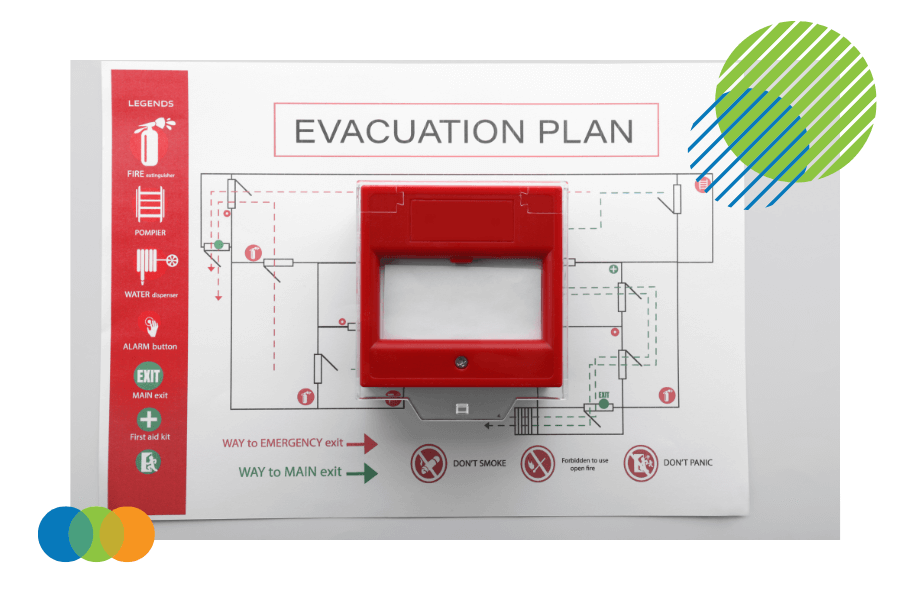
Fire Safety and Evacuation Plans
Fires can occur in any workplace, and having a well-prepared and practiced evacuation plan is crucial for the safety of all employees. Explain the following fire safety topics:
- The importance of participating in fire drills
- Proper storage and handling of flammable materials
- Regular maintenance of fire alarm systems and extinguishers
- Identification of potential fire hazards in the workplace
- Different types of fire extinguishers and their appropriate usage
- Outline the organization's emergency plan, including emergency exits, assembly points, and relevant procedures
- Treatment of fire burns

First Aid and CPR Training
First Aid and CPR are critical safety topics that should be covered in safety meetings. When medical emergencies occur, like treating bleeding from an accident, workers with this knowledge can take quick and effective action to save lives. Workplace safety topics include:
- Basic first-aid procedures and CPR knowledge
- Treatment of common injuries like cuts, burns, and sprains
- Location of first aid kits, ensuring they are always well-stocked and easy to access
- How to enroll in CPR certification courses
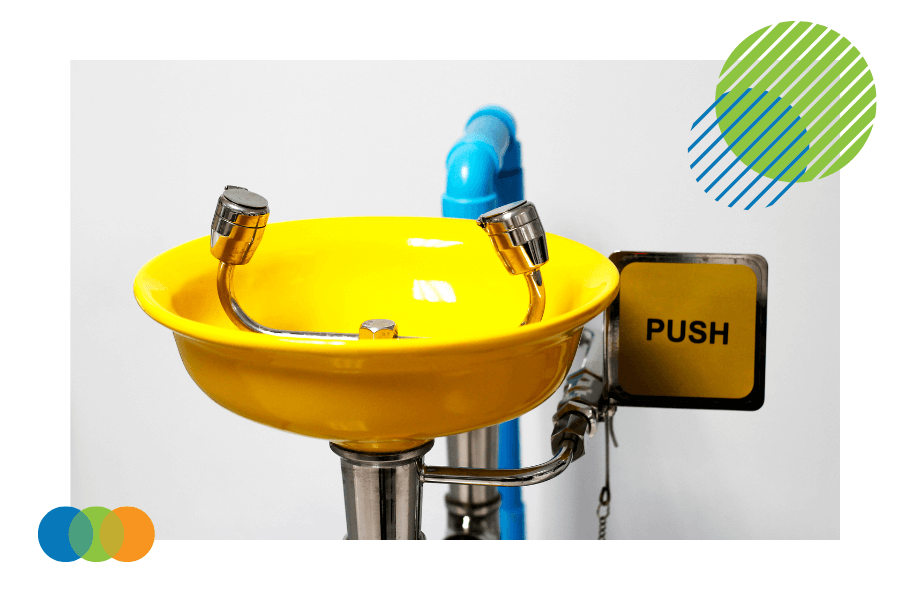
Hazard Communication
Hazard communication ensures employees are aware of hazardous substances they may encounter in the workplace and know how to protect themselves. To ensure a safe workplace, discuss the following workplace safety topics and remind employees:
- The company's hazard communication training program
- How to read safety data sheets (SDS) and label pictograms to identify hazardous substances
- Different types of hazards and the corresponding safety precautions
- Proper labeling, cleaning procedures, and storage of hazardous materials
- Using personal protective equipment (PPE) when handling hazardous substances
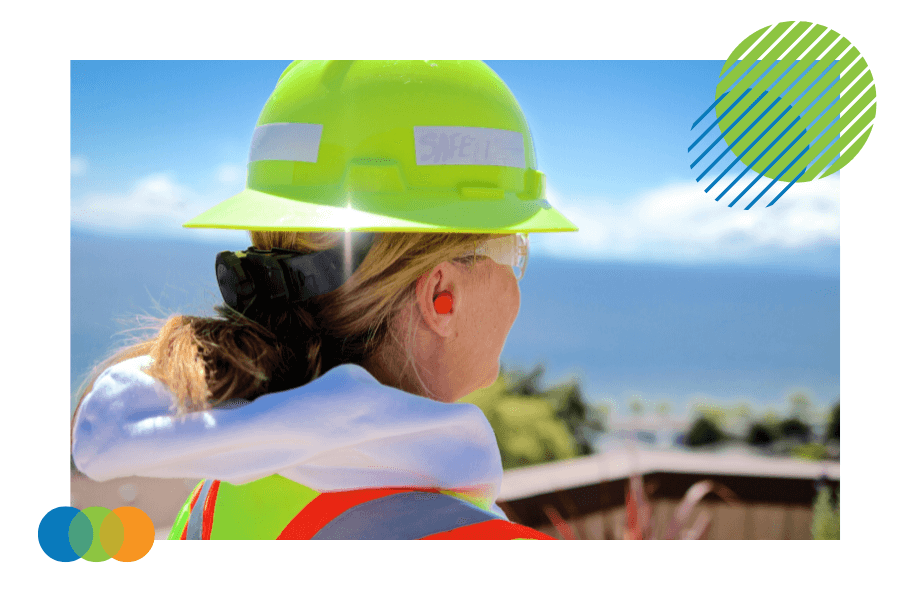
Hearing Protection
Reduce the risk of noise-induced hearing loss among your employees by delivering a safety message on hearing conservation and hearing loss. Relevant safety topics include:
- Using protective devices
- The need to identify and control sources of excessive noise in the workplace, like loud equipment
- Conducting regular noise assessments
- Implementing engineering controls, such as soundproofing or machinery maintenance
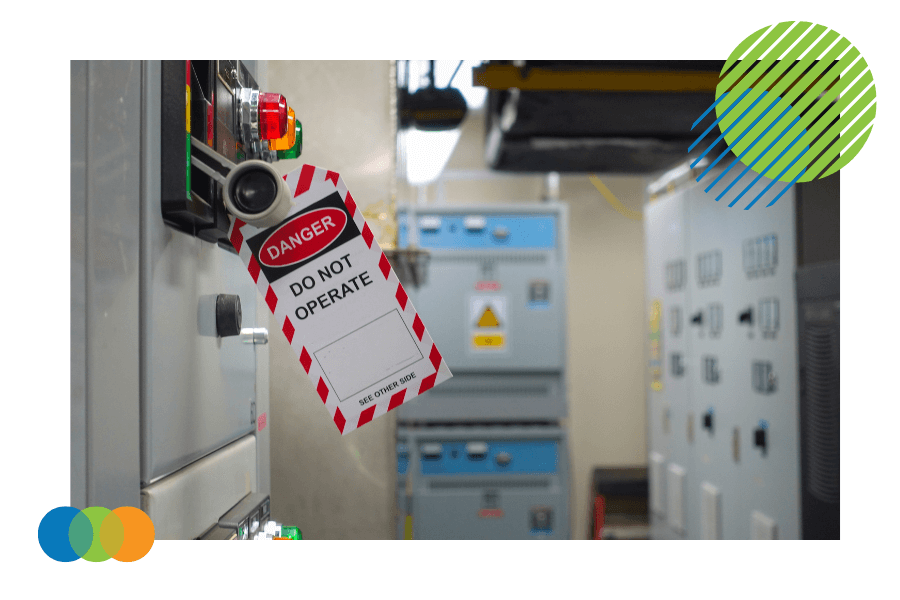
Lockout / Tagout
Meetings should cover this topic to ensure employees understand and follow the proper lockout/tagout procedures to prevent arc flash accidents and injuries during equipment maintenance and repair. Workplace and safety topics include:
- The purpose of lockout/tagout procedures in de-energizing equipment during maintenance or repair
- Using lockout/tagout devices, such as locks and tags
- The significance of training on proper locking, live wire contacts, and working with overheated wires
- The risks associated with failure to follow lockout/tagout procedures: electrocution, amputations, and other serious injuries
- Reporting issues or concerns related to lockout/tagout procedures to supervisors
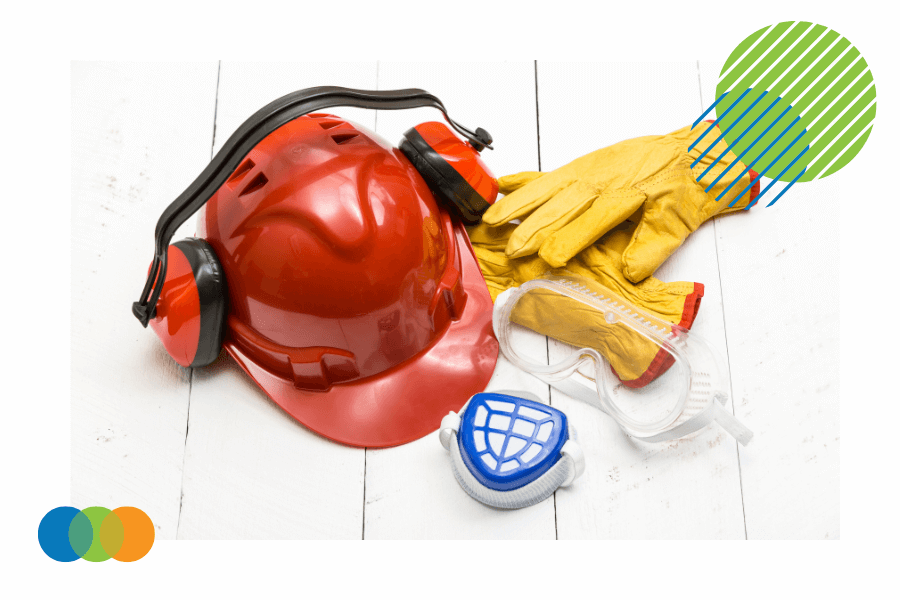
Personal Protective Equipment (PPE)
By discussing personal protective equipment, you instill a safety-conscious mindset among employees and ensure they have the necessary equipment to protect themselves from workplace hazards. Safety and health topics include:
- The different types of PPE, such as safety glasses, gloves, hard hats, and earplugs
- Wearing and maintaining PPE correctly
- Highlight the limitations of PPE and emphasize the need for other control safety measures to minimize risks.
- The need for regular PPE inspections and replacements
- Potential hazards that can be mitigated by using PPE: eye injuries, hand injuries, head injuries, and hearing loss
- Reporting issues or discomfort related to PPE so appropriate adjustments can be made
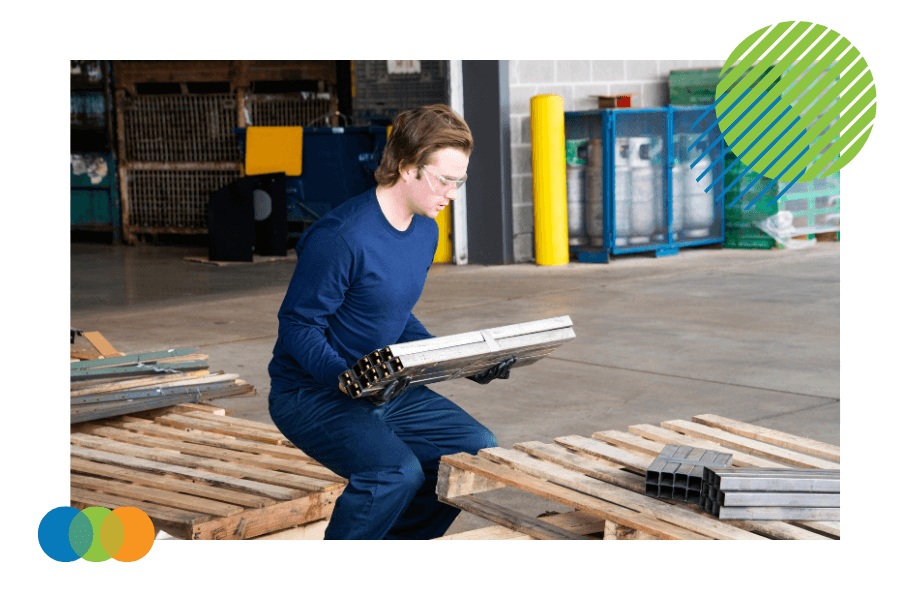
Proper Lifting Techniques
Improper lifting techniques can lead to musculoskeletal injuries, such as strains and sprains. Discussing proper lifting techniques in meetings can help prevent these injuries and promote workplace ergonomics. Talking points can include the following safety and health topics:
- Demonstrate the correct way to lift heavy objects, including bending at the knees, using leg muscles, and keeping the back straight
- Emphasize team lifting for heavy or awkward loads and using mechanical aids, such as dollies or forklifts, when appropriate.
- Consequences of improper lifting techniques, such as back injuries and chronic pain
- Speaking up if they need assistance or notice any unsafe lifting practices in the workplace
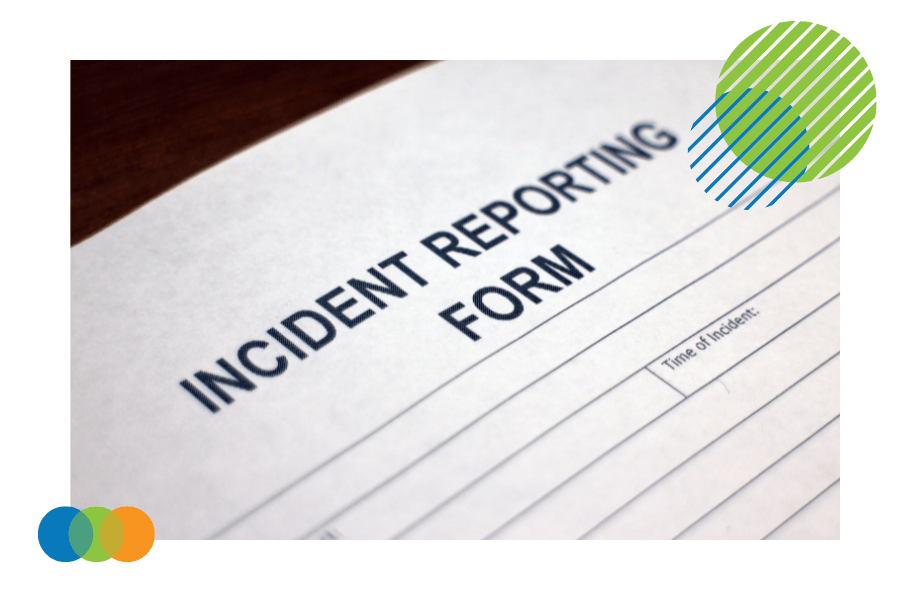
Reporting Hazards and Incidents
Reporting potential dangers allows the management to identify and rectify hazards before they escalate into accidents or injuries. Additionally, reporting incidents promptly helps accurately document them for future reference and analysis. Encourage workers by discussing the following safety and health topics:
- Methods and channels available for reporting hazards and incidents: online form, designated email address, or directly to supervisors or managers
- Ensure the confidentiality and anonymity aspects of reporting if applicable
- The consequences of not reporting hazards and incidents: disciplinary action if intentionally withheld information or failed to report a hazard that resulted in an accident
- By emphasizing the importance of reporting, organizations can create a culture of safety and accountability within the workplace.

Road and Driver Safety
Discussing road and driver safety in toolbox talks promotes safe driving habits and reduces the risk of accidents and injuries for your staff and others on the road. Safety and health topics include:
- Defensive driving techniques: maintaining a safe following distance, obeying traffic laws, and avoiding distractions while driving
- Regular vehicle maintenance, including checking tires, brakes, and lights
- Remind employees about a drug-free environment
- Dangers of driving under the influence of alcohol or drugs and the importance of designating a sober driver
- Provide information on resources and programs available to employees who may need assistance with substance abuse
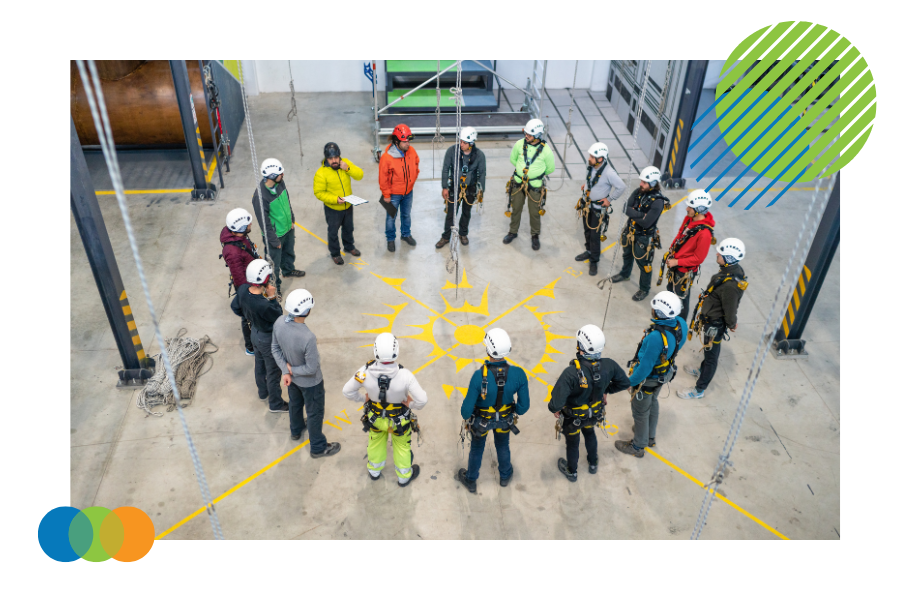
Situational Awareness
By discussing situational awareness, you are fostering a safety-oriented culture where employees are vigilant and proactive in identifying and mitigating potential hazards. Make employees aware of the following safety and health topics:
- Explain the concept of being aware of one's surroundings, identifying potential hazards, and making informed decisions to stay safe
- Discuss the importance of maintaining focus and avoiding complacency, especially in high-risk environments
- Address the role of communication in risk situations and encourage employees to report any potential hazards or unsafe conditions they observe
- Emphasize the importance of teamwork and looking out for one another's safety
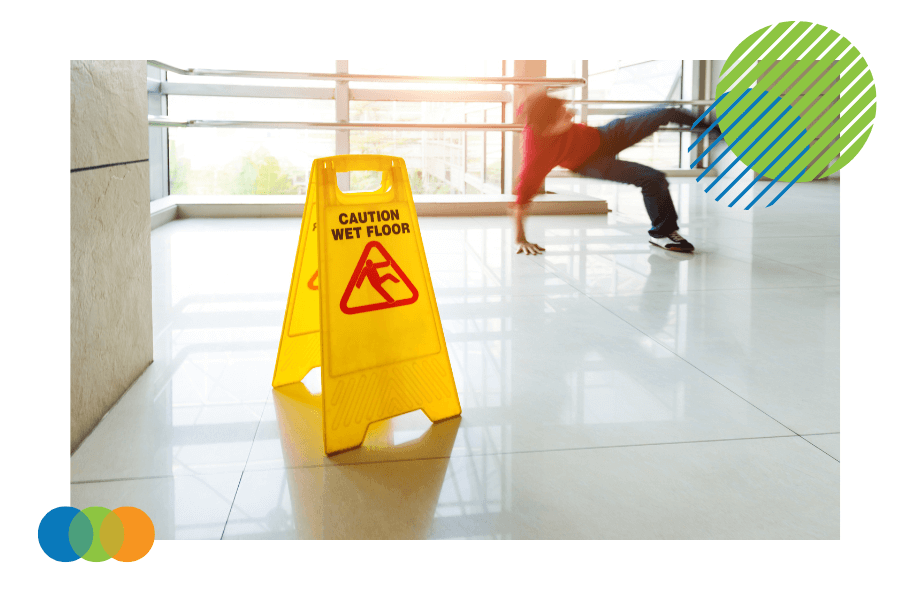
Slips, Trips, and Falls
Labor statistics show that a common slip makes the list of top workplace injuries. Recognizing fall hazards can reduce risk and create a safer working environment. Safety and health topics to discuss include:
- How to recognize and report hazards, such as wet floors, loose cables, or uneven surfaces
- The importance of using wet floor signs and preventing poor lighting
- Using handrails when necessary and avoiding unsuitable footwear

Workplace Ergonomics
By addressing factors such as posture, workstation design, and body mechanics, you can ensure your employees are comfortable working at their full potential while preventing musculoskeletal disorders like carpal tunnel syndrome. Safety and health topics include:
- How to design and arrange workspaces to fit the capabilities and limitations of individuals
- The impact of an office job and repetitive work on the spinal cord
- Provide training on proper posture, the importance of regular breaks, and how to use workstations for optimal comfort and safety.

Workplace Stress Management
Discussing workplace stress management in your next safety talk can help employees recognize and manage their mental state effectively. Safety and health topics to address include:
- Sources of workplace stress, such as heavy workloads, tight deadlines, and interpersonal conflicts
- Provide information on techniques, such as time management, relaxation exercises, and seeking support from supervisors or employee assistance programs.
- Encourage open communication and feedback to address any concerns or issues related to workplace stress.
- Highlight the importance of work-life balance and the benefits of taking breaks and vacations to recharge and reduce stress.

Workplace Violence Prevention
This topic is especially crucial for industries that deal with high-stress situations or interact with the public. Discussing effective workplace violence prevention minimizes the risk of violent incidents. Safety and health topics include:
- How to recognize signs of workplace violence: sudden changes in behavior, increased aggression or hostility, threats or intimidation towards others, and a history of violent or disruptive behavior
- Communicate that violence or threat will not be tolerated in the workplace by outlining the consequences for engaging in such behavior, including disciplinary actions and potential legal consequences.
- How to report incidents or concerns related to violence in the workplace
- Provide training on conflict resolution and de-escalation techniques such as active listening, effective communication, and strategies for diffusing tense situations
In summary: Make Safety Talk Topics Part of the Safety Training Program for Your Workplace
In conclusion, discussing work safety topics in your next safety talk is crucial for creating awareness, keeping safety training top-of-mind, and promoting a safety-oriented organizational culture. From fall protection and ladder safety to how to properly use respirators, each topic plays a vital role in ensuring the safety of employees and preventing accidents and injuries.
Covering these 21 work safety topics equips your employees with the knowledge and tools they need to maintain a safe and healthy workplace and compliments your safety training program. Remember, safety is not just a priority; it's a mindset that should be cultivated and reinforced through regular discussions and safety training.
Elevate the safety standards in your workplace by incorporating these topics into your next meeting and create more safety moments that maintain a safe and healthy working environment for everyone. Stay safe!
